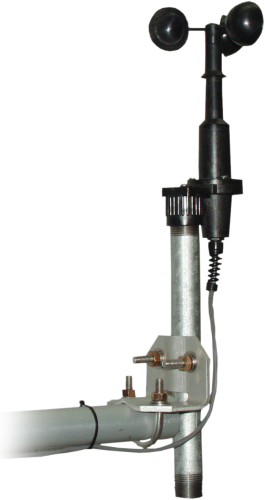All You Need to Understand About Anemometers: How They Function, Why They Matter, and Where to Utilize Them
Anemometers, however typically forgotten in the realm of scientific tools, play an essential function in numerous areas, using important insights into wind rate and air movement patterns. As we dive right into the ins and outs of anemometer modern technology, we will uncover the internal functions of these tools, their value, and the key considerations when choosing the best anemometer for certain applications.

Anemometer Fundamentals
A crucial tool made use of to gauge wind rate and instructions, the anemometer plays a vital duty in weather forecasting and various markets. An anemometer generally consists of three or 4 mugs that turn in the wind, a vane that aims into the wind, and sensing units to track the turnings or movements. By determining the turnings or motions over a details amount of time, the anemometer can identify wind speed. The vane aids figure out wind direction by aiming right into the wind, offering important data for weather forecasting, aeronautics, maritime procedures, environmental monitoring, and wind power applications.
There are various sorts of anemometers readily available, including mug anemometers, vane anemometers, hot-wire anemometers, and sonic anemometers, each with its distinct features and applications. Cup anemometers are generally made use of for standard wind rate dimensions, while vane anemometers are chosen for directional dimensions. Hot-wire anemometers are suitable for reduced airspeeds, and sonic anemometers are optimal for high-precision dimensions in research study and commercial setups. Comprehending the essentials of anemometers is crucial for exact wind data collection and analysis throughout different markets.
Principles of Anemometer Procedure
Building on the fundamental understanding of anemometer basics, the principles of anemometer procedure clarify the auto mechanics behind wind rate and instructions dimensions. Anemometers run on the principle of airflow affecting a sensor, triggering it to turn. Mug anemometers, for circumstances, have 3 or even more mugs that catch the wind, triggering them to spin much faster as the wind rate boosts. The turning rate is after that converted into a wind speed dimension. Vane anemometers, on the various other hand, use a tail or a probe that straightens itself with the wind instructions, providing a measurement of wind instructions based upon the Home Page orientation of the sensor. Hot-wire anemometers rely on a heated wire that cools down as wind passes over it, with the price of cooling down determining Look At This the wind rate. Ultrasonic anemometers action wind rate and instructions by evaluating the time it takes for ultrasonic signals to travel in between transducers. Recognizing these concepts is important for accurate and reliable wind dimensions in different applications.
Relevance of Anemometers
Anemometers play a crucial role in measuring wind speed and direction, giving vital information for climate projecting, environment research studies, environmental tracking, and aeronautics procedures. Meteorologists depend on anemometers to collect exact wind information, aiding them recognize climate patterns, forecast tornados, and concern prompt warnings to the public. Wind farm drivers make use of anemometers to analyze wind problems and make the most of electrical energy production from wind turbines.
Applications Across Numerous Industries
In the renewable power sector, anemometers play an important role in evaluating wind problems for wind ranch placements, making certain optimal power production. Industries like construction and mining make use of anemometers to keep track of wind speeds, vital for safety and security methods, specifically when working at heights or in open-pit mines where strong winds can present dangers. In agriculture, anemometers help farmers in taking care of plant splashing by giving real-time information on wind speed to stay clear of drift.

Picking the Right Anemometer for Your Needs
For general objectives, a mug anemometer is ideal for measuring wind speed, while a vane anemometer provides wind instructions information. Hot-wire anemometers are perfect for reduced airspeed measurements, and ultrasonic anemometers offer high accuracy and resilience.

Verdict
In conclusion, anemometers play a critical function in gauging wind speed and instructions throughout different sectors. It is essential to take into consideration the significance of anemometers in order to make educated choices More hints when selecting the most ideal device for measuring wind problems.
There are various types of anemometers available, including mug anemometers, vane anemometers, hot-wire anemometers, and sonic anemometers, each with its unique functions and applications. Mug anemometers are commonly utilized for fundamental wind rate measurements, while vane anemometers are favored for directional measurements. Hot-wire anemometers are suitable for low airspeeds, and sonic anemometers are excellent for high-precision measurements in research study and commercial setups.Structure on the fundamental understanding of anemometer fundamentals, the principles of anemometer operation elucidate the auto mechanics behind wind speed and instructions measurements. For general purposes, a mug anemometer is suitable for measuring wind rate, while a vane anemometer supplies wind instructions data.